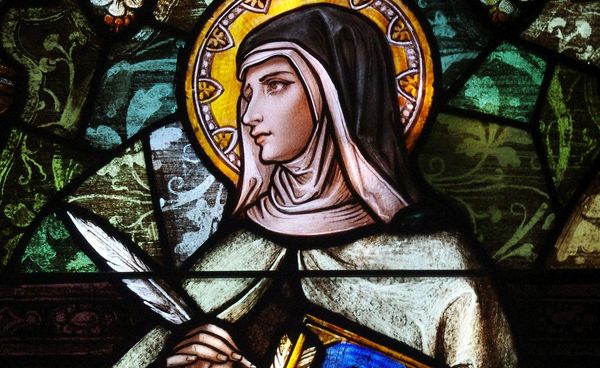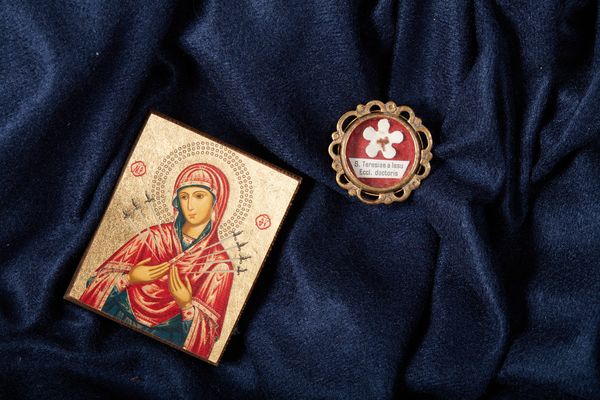Active during the Counter-Reformation, Teresa became the central figure of a movement of spiritual and monastic renewal, reforming the Carmelite Orders of both women and men. The movement was later joined by the younger Carmelite friar and mystic John of the Cross, with whom she established the Discalced Carmelites. A formal papal decree adopting the split from the old order was issued in 1580.
Her autobiography, The Life of Teresa of Jesus, and her books The Interior Castle, and The Way of Perfection, are prominent works on Christian mysticism and Christian meditation practice. In her autobiography, written as a defense of her ecstatic mystical experiences, she discerns four stages in the ascent of the soul to God: mental prayer and meditation; the prayer of quiet; absorption-in-God; ecstatic consciousness. The Interior Castle, written as a spiritual guide for her Carmelite sisters, uses the illustration of seven mansions within the castle of our soul to describe the different states our soul can be in during our life.
Forty years after her death, in 1622, Teresa was canonized by Pope Gregory XV. On 27 September 1970 Pope Paul VI proclaimed Teresa the first female Doctor of the Church in recognition of her centuries-long spiritual legacy to Catholicism.
First Female Doctor of The Church
In 1576, unreformed members of the Carmelite order began to persecute Teresa, her supporters and her reforms. Following a number of resolutions adopted at the general chapter at Piacenza, the governing body of the order forbade all further founding of reformed convents. The general chapter instructed her to go into "voluntary" retirement at one of her institutions. She obeyed and chose St. Joseph's at Toledo. Meanwhile, her friends and associates were subjected to further attacks.
Several years later, her appeals by letter to King Philip II of Spain secured relief. As a result, in 1579, the cases before the inquisition against her, Gracián and others, were dropped. This allowed the reform to resume. An edict from Pope Gregory XIII allowed the appointment of a special provincial for the newer branch of the Carmelite religious, and a royal decree created a "protective" board of four assessors for the reform.
During the last three years of her life, Teresa founded convents at Villanueva de la Jara in northern Andalusia (1580), Palencia (1580), Soria (1581), Burgos, and Granada (1582). In total, seventeen convents, all but one founded by her, and as many men's monasteries, were owed to her reforms over twenty years.
In 1622, forty years after her death, she was canonized by Pope Gregory XV. The Cortes exalted her to patroness of Spain in 1627. The University of Salamanca had granted her the title Doctor ecclesiae (Latin for "Doctor of the Church") with a diploma in her lifetime, but that title is distinct from the papal honour of Doctor of the Church, which is always conferred posthumously. The latter was finally bestowed upon her by Pope Paul VI on 27 September 1970, along with Catherine of Siena, making them the first women to be awarded the distinction. Teresa is revered as the Doctor of Prayer. The mysticism in her works exerted a formative influence upon many theologians of the following centuries, such as Francis of Sales, Fénelon, and the Port-Royalists. In 1670, her coffin was plated in silver.
Credits:
Discriptions of saints lives and biographies have been excerpted, summarized, or compiled from
Franciscan Media,
CatholicSaints.Info,
Catholic Online, and
Wikipedia.


